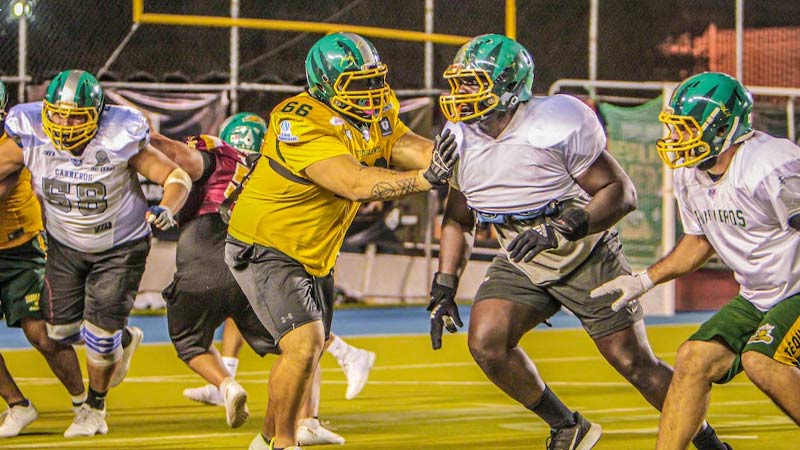In the world of football, where strategy, athleticism, and teamwork collide, the defensive side of the game plays an equally crucial role as the offense. Among the intricate tactics employed by defensive units, the art of “Cover Defense” stands as a pillar of stopping the opponent’s aerial assault.
This strategy involves a symphony of coverage schemes, player assignments, and split-second decision-making that aims to stifle the offense’s passing game.
In this blog post, we delve deep into the playbook to unravel the concepts, strategies, benefits, drawbacks, and nuances that define cover defense in football. So, stay focused.
What Is Cover Defense In Football?
Cover defense in football refers to the strategies and formations employed by the defensive team to counteract the offense’s passing attack.
In the modern landscape of football, particularly with the prevalence of spread offenses, defensive units must be adept at thwarting aerial assaults launched by their opponents.
To achieve this, defensive coordinators deploy a variety of coverage schemes designed to limit the effectiveness of the offense’s passing game.
Defensive coverages are essentially predetermined patterns of positioning and responsibilities taken up by the defensive players on the field. These coverages are numbered as “cover 0,” “cover 1,” “cover 2,” “cover 3,” and “cover 4,” each denoting a distinct approach to coverage.
Types of Cover Defense In Football
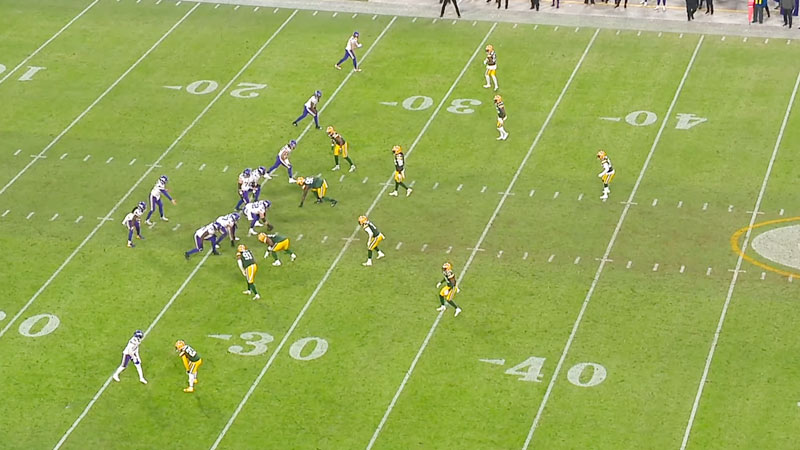
In addition to the two major types of cover defense in football – Man-to-Man Coverage and Zone Defense – there are specific coverage schemes that fall under these categories. Let’s delve into these coverages in more detail:
Man-to-Man Coverage
In this type of coverage, each defensive player is responsible for covering a specific offensive player throughout the play. The defender sticks with their assigned offensive player, trying to prevent them from getting open and making a reception.
Man-to-man coverage is often used when the defense wants to apply tight, individual pressure on receivers to disrupt their routes and timing. Variations include:
Cover 0
All defensive players are in man coverage with no deep safety help, allowing for aggressive blitzing to pressure the quarterback.
Cover 1
Similar to man coverage, but with one safety playing deep to help prevent long passes.
Zone Defense
In zone defense, the defensive players are responsible for specific areas of the field rather than individual offensive players. They cover zones, allowing them to react to the play and potential threats within their designated area. Variations include:
Cover 2
Two safeties split the deep field into halves, and the rest of the defense covers specific zones in the intermediate and short areas.
Cover 3
The defense divides the deep field into three zones, with each safety covering a deep third and the remaining defenders covering underneath zones.
Cover 4
Also known as “quarters coverage,” the secondary is divided into four deep zones, each defender responsible for one-quarter of the deep field.
These coverages form the foundational principles of defensive strategies in football, allowing defensive coordinators to mix and match them based on the situation, the opponent’s strengths and weaknesses, and the game plan.
The choice of coverage depends on factors such as the offensive formation, down and distance, field position, and the defensive personnel available.
When to Use Cover Defense In Football?
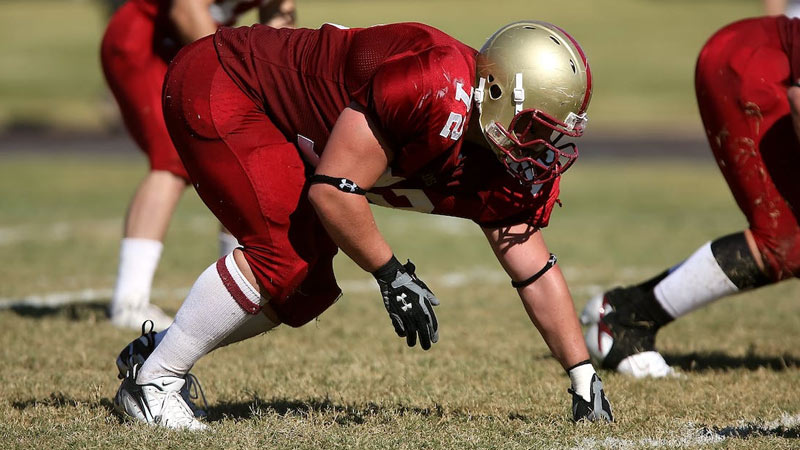
The decision to use man-to-man coverage or zone defense in football depends on various factors, including the offensive situation, the opponent’s tendencies, and the defensive team’s strengths. Here’s when each type of coverage is typically utilized:
Man-to-Man Coverage
When Defending Top Receivers
Man-to-man coverage is often employed when facing an opponent with standout wide receivers or tight ends. Assigning a defender to shadow these key offensive weapons can neutralize their impact on the game.
Pressuring the Quarterback
Man coverage can complement blitz packages effectively. When the defense aims to apply aggressive pressure on the quarterback, tight man coverage can disrupt the timing of routes and force quick decisions.
Short Yardage Situations
Man coverage can be effective in short-yardage situations, especially when the offense needs to gain only a few yards for a first down. The close proximity of defenders to receivers limits quick passes and minimizes yards gained after the catch.
Red Zone Situations
In the red zone, where the field becomes compressed, man-to-man coverage can help eliminate passing lanes and make it difficult for the offense to create open spaces for easy throws.
Zone Defense
Preventing Big Plays
Zone defense is often used to prevent long passes and big plays. By dividing the field into zones, defenders can effectively cover different areas and reduce the likelihood of deep completions.
Passing Downs
Zone defense is frequently employed on passing downs, such as third-and-long situations, where the priority is to prevent the offense from converting for a first down. Zones help keep the play in front of the defenders and force the offense to make multiple successful completions to move the chains.
Limiting Run After Catch
Zone coverage can be effective in limiting yards gained after the catch. Defenders are in a position to converge on the receiver as soon as they catch the ball, reducing the opportunity for significant gains.
Defending Against Option Routes
Zone defense can be effective against option routes, where receivers adjust their routes based on the defensive coverage. Defenders in zone coverage can react to the receiver’s movement and make it difficult for them to find open areas.
In reality, defensive coordinators often blend man-to-man and zone principles within their game plans.
They might use man coverage on certain downs and distances or against specific receivers while deploying zone coverage to prevent big plays and limit the effectiveness of the passing game.
Strategies of Cover Defense In Football
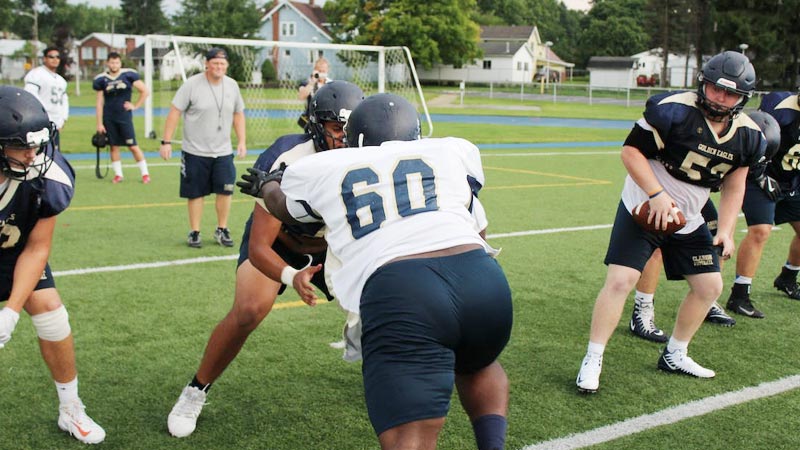
Cover defense strategies in football involve a combination of coverage schemes, player assignments, and adjustments designed to counter the offense’s passing attack. Here are some key strategies used in cover defense:
Mixing Coverages
Effective defensive coordinators often employ a mix of man-to-man and zone coverages to keep the offense guessing. By varying the coverage schemes, they can create confusion for the quarterback and disrupt the timing of the passing game.
Disguising Coverage
Before the snap, defenders might initially show a certain coverage alignment and then rotate into a different coverage after the snap. This can confuse the quarterback’s pre-snap reads and force them into making mistakes.
Double Teaming
Defenses may double-team a particularly dangerous receiver, especially in man coverage. This involves assigning two defenders to cover the receiver closely, making it difficult for them to get open.
Baiting the Quarterback
In zone coverage, defenders can strategically position themselves to encourage the quarterback to throw the ball into a certain area, only to quickly react and make a play on the ball.
Pattern Matching
Some defenses use a hybrid approach, where defenders initially play zone but transition to man-to-man coverage if a receiver enters their zone. This helps defend against crossing routes and option routes effectively.
Adjusting to Personnel
Defensive coordinators may adjust coverages based on the offensive personnel on the field. For instance, they might deploy different coverages against a team with multiple talented wide receivers compared to a team that heavily relies on tight ends and running backs.
Blitz Packages
Cover defense can be enhanced by well-timed blitzes. By sending extra pass rushers, the defense can pressure the quarterback and disrupt the passing game’s rhythm, complementing the coverage strategies.
Situational Awareness
Defenders need to be aware of the down and distance, the game situation, and the offensive tendencies. This awareness helps them anticipate the type of play the offense is likely to run and adjust their coverage accordingly.
Communication
Effective communication among defenders is crucial. Players need to communicate coverage assignments, shifts, and adjustments in real-time to ensure everyone is on the same page.
Adaptation
As the game progresses, offenses may adjust their strategies. Similarly, the defense must adapt to the evolving offensive game plan by making in-game adjustments to their coverages and assignments.
Benefits of Cover Defense In Football
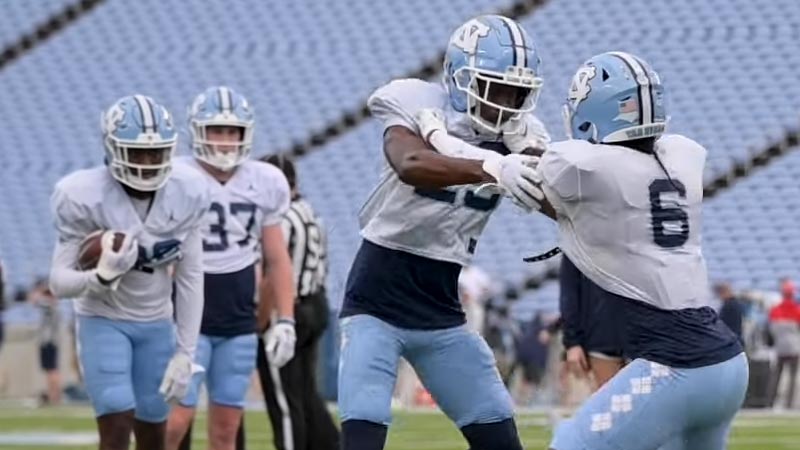
Implementing a solid cover defense in football offers several benefits to the defensive team. Here are some key advantages:
Pass Disruption
Cover defense is designed to disrupt the timing and rhythm of the offense’s passing game. By effectively covering receivers and passing lanes, the defense can force the quarterback to hold the ball longer, increasing the chances of sacks and hurried throws.
Minimizing Big Plays
Cover defense is particularly effective at limiting big plays, such as deep passes and long gains after the catch. The structure of zone coverages and the presence of deep safeties help prevent opponents from making explosive plays downfield.
Forcing Turnovers
Tight coverage and well-timed interceptions are common outcomes of successful cover defense. By denying the offense open passing lanes, defenders have opportunities to make plays on the ball, resulting in interceptions and fumble recoveries.
Red Zone Efficiency
Cover defense can be especially effective in the red zone, where the field is condensed. The defense’s ability to maintain tight coverage and take away passing options becomes even more critical, potentially leading to incomplete passes or turnovers.
Adapting to Opponent Strengths
Cover defenses allow defensive coordinators to tailor their strategies to counter the strengths of the opposing offense. Whether the opponent relies on a star receiver or a strong passing attack, the defense can adjust coverages to neutralize these threats.
Limiting Yards After Catch
Zone defenses, in particular, are designed to limit yards gained after the catch. Defenders are positioned to converge on the receiver as soon as the ball is caught, preventing substantial gains after short completions.
Personnel Flexibility
Effective cover defenses can be adjusted based on the personnel available. Whether the defense boasts exceptional cornerbacks, talented safeties, or versatile linebackers, the coverage schemes can be tailored to maximize the strengths of the defensive roster.
Third Down Success
Cover defenses are often employed in third-down situations, as they can effectively prevent the offense from converting for a first down. By keeping the play in front of them and forcing short completions, the defense can get off the field more often.
Creating Confusion
Mixing man-to-man and zone coverages, along with disguise and rotation, can confuse quarterbacks and disrupt their pre-snap reads. This confusion can lead to hesitation, errant throws, and turnovers.
Teamwork and Communication
Implementing a successful cover defense requires strong communication and teamwork among defenders. Players must communicate assignments, shifts, and adjustments in real-time, fostering a cohesive unit on the field.
Drawbacks of Cover Defense In Football
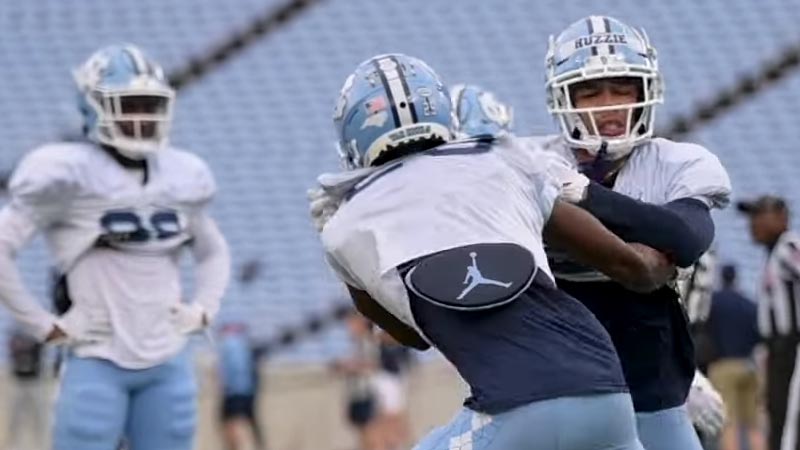
While cover defense in football offers numerous advantages, there are also certain drawbacks and challenges associated with its implementation. Here are some potential drawbacks:
Vulnerability to Run Plays
Depending on the coverage scheme and player assignments, cover defenses can sometimes leave gaps in run defense. Focusing on pass coverage might leave the defense susceptible to effective rushing plays.
Exploitable Mismatches
If the offense can create mismatches by aligning their skilled players against less skilled defenders, cover defenses might struggle to effectively contain those matchups.
Complexity
Some cover defense schemes, especially those involving pattern matching and rotations, can be complex and require high levels of communication and coordination among defenders. Mistakes in coverage assignments can lead to blown coverages and big plays for the offense.
Limited Pressure
While cover defenses can limit the effectiveness of the passing game, they might not provide as much immediate pressure on the quarterback as aggressive blitzing schemes. This could allow the quarterback more time to make accurate throws.
Yards After Catch
In zone defenses, there can be a risk of allowing short completions that lead to yards after the catch. If defenders don’t converge quickly after the catch, the offense can gain additional yardage.
Risk of Overcommitting
Aggressive coverages like man-to-man or cover 0 might leave defenders susceptible to double moves and trick plays. If the offense can exploit these situations, it could result in big gains.
Personnel Limitations
A successful cover defense often relies on having skilled cornerbacks, safeties, and linebackers. If a team lacks talent in these positions, the effectiveness of coverages can be limited.
Communication Breakdowns
Effective cover defense requires seamless communication among defenders to ensure everyone is on the same page. Miscommunication or missed assignments can lead to open receivers and big plays.
Dependence on Pass Rush
Cover defenses often rely on the front four or five players to generate pressure on the quarterback. If the pass rush is not effective, the coverage might be compromised.
FAQs
What exactly is cover defense in football?
Cover defense is a strategic approach where the defensive team uses a combination of coverage schemes and player assignments to counteract the offense’s passing attack.
It encompasses a range of coverage types, such as man-to-man and zone defense, each with its own set of advantages and challenges.
How do coverages like “Cover 0,” “Cover 1,” “Cover 2,” “Cover 3,” and “Cover 4” fit into cover defense?
These terms represent specific coverage schemes that fall under the umbrella of cover defense. “Cover 0” involves aggressive man-to-man coverage without deep safety help, while “Cover 1” features one safety deep.
“Cover 2” and “Cover 4” divide the secondary into zones to prevent big plays, and “Cover 3” divides the field into three deep zones, limiting deep passes.
When should a team opt for man-to-man coverage and when is zone defense more suitable?
Man-to-man coverage is ideal for defending top receivers, pressuring the quarterback, short-yardage situations, and red zone scenarios. Zone defense is effective in preventing big plays, limiting yards after the catch, and adapting to various offensive situations, especially on passing downs.
What are the benefits of implementing cover defense in football?
Cover defense can disrupt the offense’s passing game, minimize big plays, force turnovers, adapt to opponent strengths, limit yards after catch, and provide versatility in different game situations.
Are there any drawbacks to using cover defense?
While cover defense offers numerous advantages, it can leave vulnerabilities in run defense, be susceptible to mismatches, require complex communication, limit immediate pressure on the quarterback, and be dependent on defensive personnel.
Wrapping Up
In the dynamic realm of football, the significance of cover defense cannot be overstated.
It’s a strategic dance that involves calculated risk-taking, communication, and a deep understanding of both the offense’s intentions and the defense’s capabilities.
As teams strive for dominance on the field, mastering the art of cover defense remains a pivotal aspect of building a formidable defense that can stand strong against the most potent passing attacks. Thank you for your support.

